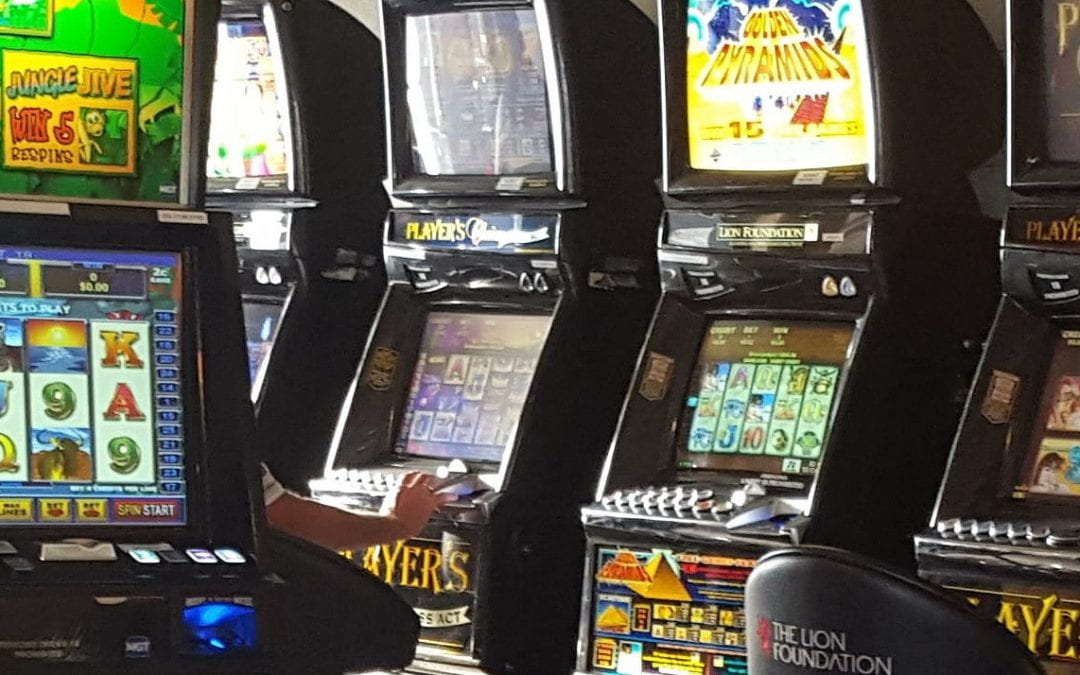The widespread proliferation of commercial gambling machines (also variously referred to as ‘slots’, ‘fruit machines’, ‘poker machines’, ‘pokies’ or ‘electronic gambling machines’) and improvements to their design have contributed to rising levels of harm from gambling.
In most developed countries, machine designers and gambling providers have enjoyed relative freedom in developing the addictive potential of gambling machines with few constraints by governments.
Researchers looking into ways of reducing gambling harm have concentrated mainly on the interface between gamblers and the machines themselves. Little attention has focused on the role gambling contexts and environments play in player interactions with machines and their potential to facilitate addictive engagement.
Yet it makes sense to consider the immediate environment in which a player interacts with these machines, particularly the rooms in which they have been situated—call them “gambling machine rooms”. They contribute in a variety of important ways to the heightened experience that gambling offers.
A dominant feature of most gambling machine rooms is the close placement or clumping of the machines together. They are typically clustered or lined up into tightly packed rows with very little space in between for alternative activities. There are seldom any tables or open areas that might provide spaces for talking and socializing.
The rows of machines lining the rooms orient people to the machine screens. The only other pieces of furniture tend to be bar stools which are individually placed before the machines. Placed in this way, they encourage those who enter to settle into a solitary relationship with what is happening on the screens.
Even if two or three players were to turn their stools around to engage in conversation because of the close placement of the machines, such conversations would run the risk of annoying other players by blocking access along the aisles or creating distracting noise.
The clumping of machines effectively reminds those who enter that this space has been allocated for one purpose and one purpose only: the engagement of players with the machines. It is not a space for interactive or spectator sport-type activity. It proclaims there is little other reason to be in the room. As occurs in the rows of study desks in a library and the rows of chairs in the dark of a cinema, the clumping enables players to effectively allow their awareness of others in the room to gradually fade and to allow themselves to become totally absorbed with what is on the screens.
Another key feature of gambling machine rooms is the sensory environment that is created. The partitioning off of these rooms from other parts of the venue enables providers to fashion such spaces in different ways than other parts of the venue.
Most these rooms tend to have subdued lighting achieved by their location away from windows or with windows that have been partially or fully obscured by signage, plants, curtains or other objects. For example, machine rooms in a club venue are likely to be partitioned along windowless walls and in bar venues, when windows do exist, they tend to be curtained. This enables these spaces to have subdued lighting which then provides a contrast with the constantly flashing lights of the machine screens and the light displays around and particularly above the machines.
The colourful flashes are never enough to fully illuminate the area; on the contrary, they provide a backdrop for the anonymous silhouettes of figures playing on the machines. It is perhaps because the lights and noises on and around the machine are so arousing, it is important to keep the surrounding environment less arousing in terms of sensory input, including the noise, sound and smells of other parts of the venue.
One more feature of worth considering is the separate partitioning of these rooms and how they create the ideal environment for players to maintain their anonymity. The player can sit alone without much in the way of interruptions or distractions. Nothing is required of them in terms of creating or maintaining conversations. Besides, whenever such talk looks likely to occur, it would be generally understood that it should be brief and should not interrupt or distract the players in the room.
What matters here is seeing gambling machine environments as intentionally designed to enable solitary and anonymous engagement with the machines and, in this way, promote a style of play more oriented towards heavy and problematic gambling.
Read more in an article by Peter Adams and Janine Wiles Gambling machine annexes as enabling spaces for addictive engagement.
Also look at; Gambling Freedom and Democracy
Text and photo by Peter J. Adams


Recent Comments